
It’s the fourth survey made by Postman – the world’s leading API platform. The biggest ever report was held within four weeks in June and July 2022. It contains the thoughts of more than 37,000 developers and API professionals on topics that include the economy, employment, remote work, the tools they use, and their views on the industry’s direction, combined with the data gathered on the Postman API platform. Read the Full State of the API report.
Postman is used by more than 20 million developers and 500,000 organizations for building and using APIs. It simplifies each step of the API lifecycle and streamlines collaboration, enabling users to create better APIs faster.
Postman Survey on API: Main Aspects
The study is very extensive; we highlighted some aspects that we found interesting:
- Many professionals expressed their opinion on APIs in this year’s survey: CEOs, business analysts, customer success staff, etc. Nearly half of the respondents were developers, and about half held non-developer roles.

Source: “2022 State of the API Report,” Postman
- Today’s businesses run on software, which must interact with numerous other software platforms. That’s why most development efforts are now centered on APIs. The API-first approach contributes to success. The API-first approach allows organizations to build APIs that serve all applications that can be developed and maintained efficiently for all devices, platforms, and operating systems.
- APIs are the building blocks that allow developers to build applications much faster and rely on APIs for various crucial business tasks. Hence, developers use APIs almost daily – they spend more than ten hours a week on average working with APIs. The biggest period is spent coding and programming, which matches the ideal state. The second place is for debugging and manual testing which is a tedious task sometimes, and respondents wished they could cut the amount of time spent here.
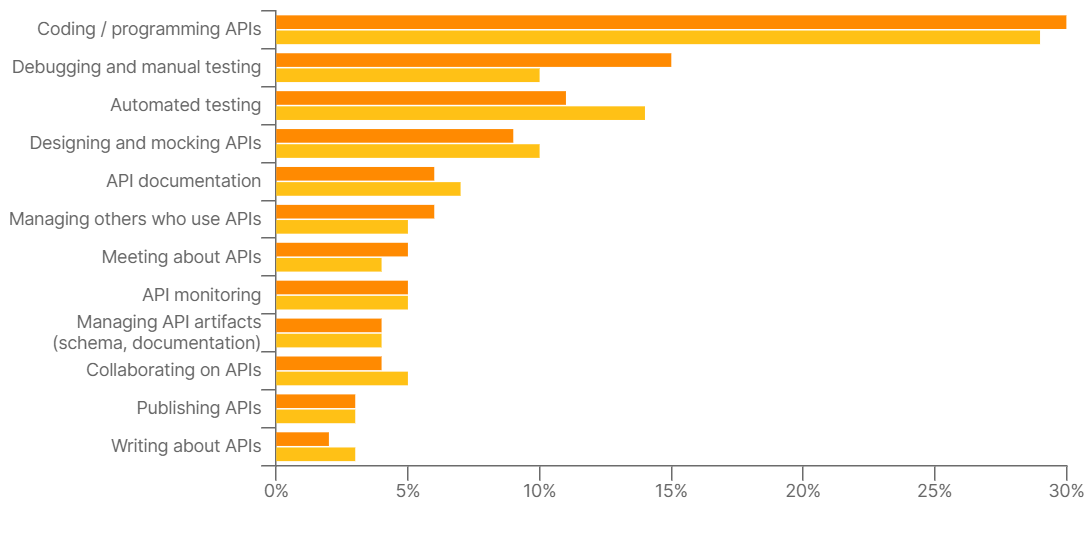
Source: “2022 State of the API Report,” Postman
* Orange color is actual time spent on API and Yellow stands for the desired “API time.”
- API-first leaders amount to only 8% of respondents. However, this modest group produces APIs faster and has fewer failures. They also have a positive vision of employment and spending. This can be connected with the fact that most respondents consider such developers more productive with faster integration with partners.
- The quality is at the top among the priorities for development teams and organizations. Other important factors are agility, reliability, security, and speed of development to more than half of respondents.
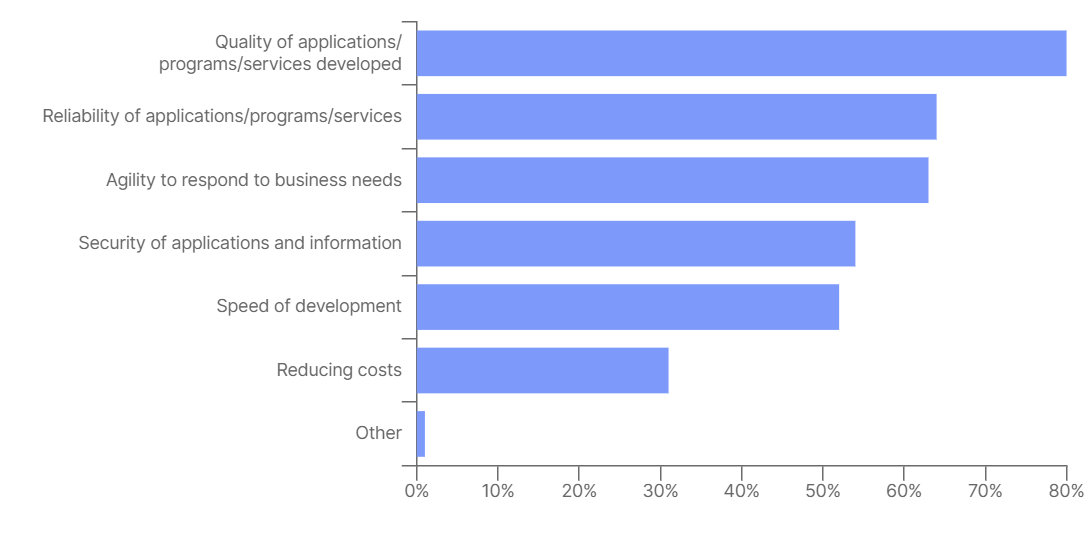
Source: “2022 State of the API Report,” Postman
- Private APIs is the leader among three API categories (public, private, and partner) in the percentage terms of APIs in an organization. It is worth noting that API-first leaders “Reported a lower percentage of private APIs and higher percentage of public APIs.” It means that these leaders spend less time coding functionality in-house when they can rely on functionality already publicly available from others across the industry.
- Performance is this year’s top factor that matters for respondents before integrating with an API. Security came in a close second to it.

Source: “2022 State of the API Report,” Postman
Businesses started to replace traditional methods of internal communication like file transfer, database sharing, or email; instead, they increasingly use APIs to collaborate within the organization. That has led to the fact that this year’s number-one choice among factors that help to decide whether to consume an API is how well an API integrates with internal systems. This factor is also relevant when deciding whether to produce an API. Last year, this consideration didn’t even make the top three factors for API consumption.
As for the obstacles in consuming an APIs, the bare majority of respondents said the number-one block was lack of documentation.
Other top obstacles include difficulty in discovering APIs (38%) and lack of knowledge (30%).
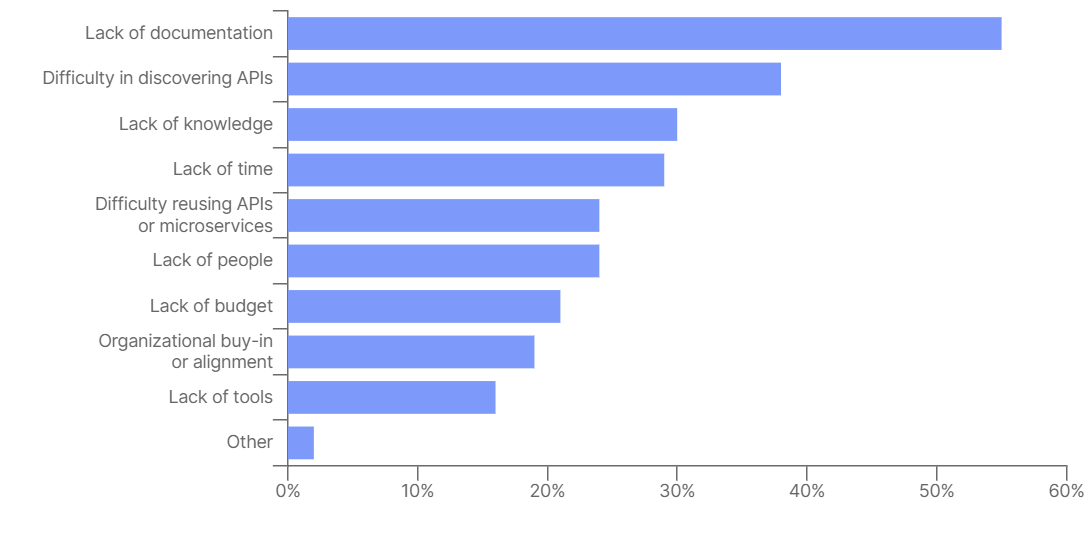
Source: “2022 State of the API Report,” Postman
- Looking at the specific technologies used for APIs, far and away REST APIs are the most common approach developers use today, according to the report. Webhooks, GraphQL, and gRPC are also becoming trendy.
- Lack of time was again chosen as organizations’ biggest obstacle to producing APIs, followed by lack of people. A big surprise in the report this year was that the respondents identified a lack of API design skills as a third-biggest problem when producing an API.
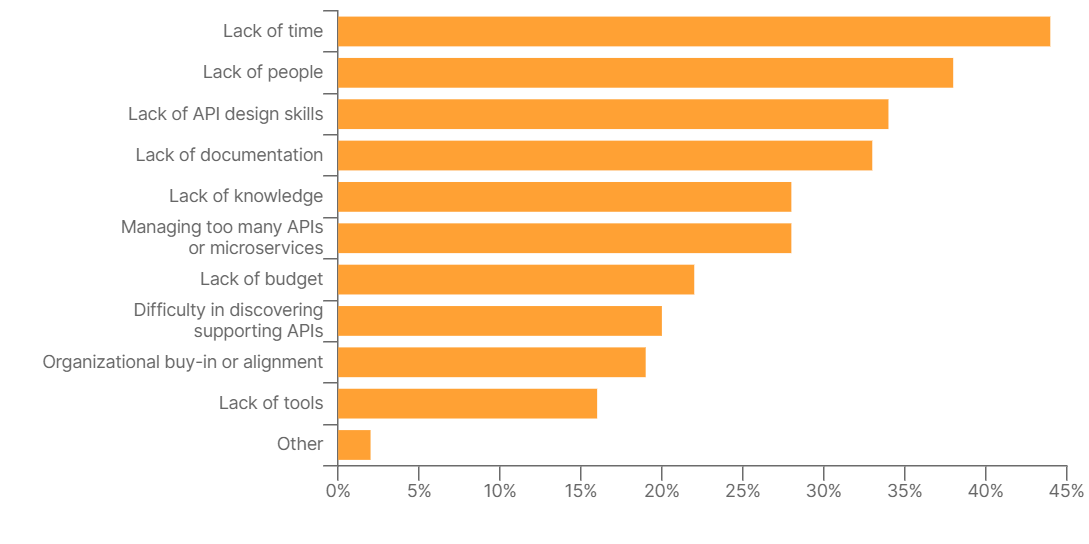
Source: “2022 State of the API Report,” Postman
- About 20% of respondents confirmed API security incidents or breaches at least once a month at their company. While more than half of respondents said such occasions happen once a year at most. This shows that the security implementation should be made early in the API lifecycle.
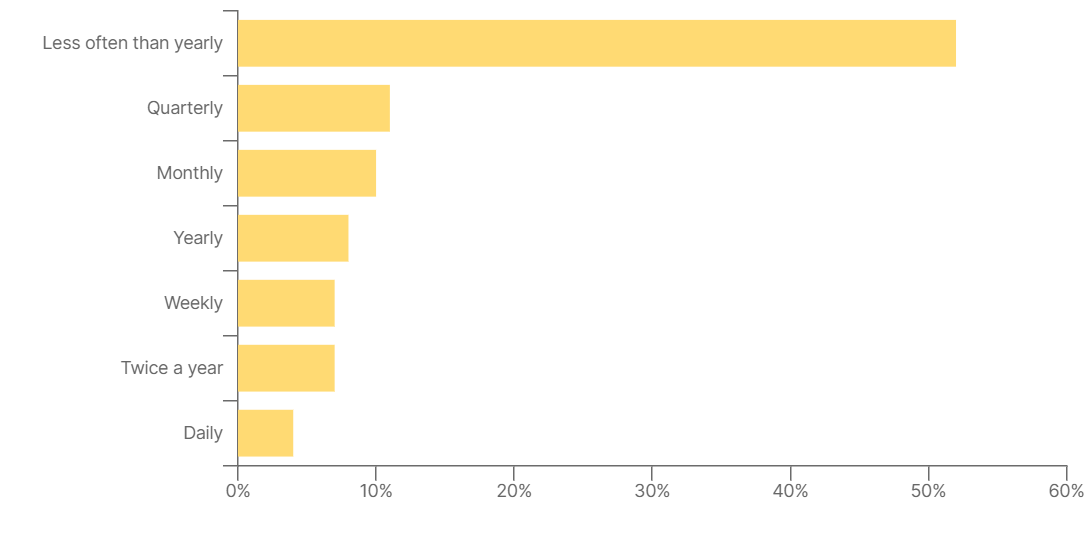
Source: “2022 State of the API Report,” Postman
Among API security problems the most frequently occurred are: poor API logging practices, problems in API authentication, and API misconfigurations.
- Documenting APIs is another challenge people face: APIs documentation is considered average documented by the quarter of respondents and only 3% rated the APIs they work with as “very well documented.” That’s where a room for improvement lies. The majority of respondents say that if you want to improve your API documentation you need to provide up-to-date content, code samples and better examples. We’ll elaborate upon this issue next.

Source: “2022 State of the API Report,” Postman
Pain Points of API Documentation
As we said before, documenting APIs is crucial since only some are very well-done. And developers don’t like APIs with poor documentation, even if the product is actually great. Below are some common issues devs have with API docs:
- It’s written in complex language. This is a common problem for auto-generated documents. Although many documentation generation tools do a great job commenting on the code, they cannot replace actual explanations in simple human language written by a developer or a technical writer.
- Very few code samples. This is another end of the spectrum where explanations are abundant, but the number of actual code examples is minimum.
- Available only to registered users. Such an obstacle frustrates the people who want to know what your API does before deciding if they want it.
- It’s too long, inaccurate, or hasn’t been updated in years, etc. As the Postman report confirms, creating good documentation is as important as building a good API. Poorly written documents are failing the whole development effort.
High-quality API documentation is important. If you want to delve into the theme, here are our useful articles on the matter:
ClickHelp Features for API Documentation
ClickHelp is a documentation platform where you can create your API documentation. The great part is that your API documentation can be published online in a single portal with user guides and knowledge bases that simplifies search possibilities for your clients. We have the following features to document APIs:
- API documentation quick parts
- code examples with syntax highlighting to separate them from text (more than 30 programming languages are supported)
- the possibility to make password-protected documents for internal use or for restricted external APIs.
ClickHelp also provides a REST API for tasks automation and integration of your documentation workflow into the existing business processes.That’s not all, we are planning to develop API docs features in the product. Keep your eyes on our updates.
Conclusion
The trend is clear – the number of APIs will increase. Companies rely on tens of thousands of APIs and microservices. Although some respondents find the proliferation of microservices as an obstacle to consuming and producing APIs.
The Postman survey shows that consumers treat documentation as an important driver when selecting an API. So the need to treat documentation like a product is evident. Also, don’t forget that better documentation means more profit.
Good luck with your technical writing!
ClickHelp Team
Author, host and deliver documentation across platforms and devices
 Elmirain Technical Writing on 10/26/2022 — 5 minute read
Elmirain Technical Writing on 10/26/2022 — 5 minute read Elmirain Technical Writing on 10/26/2022 — 5 minute read
Elmirain Technical Writing on 10/26/2022 — 5 minute read







